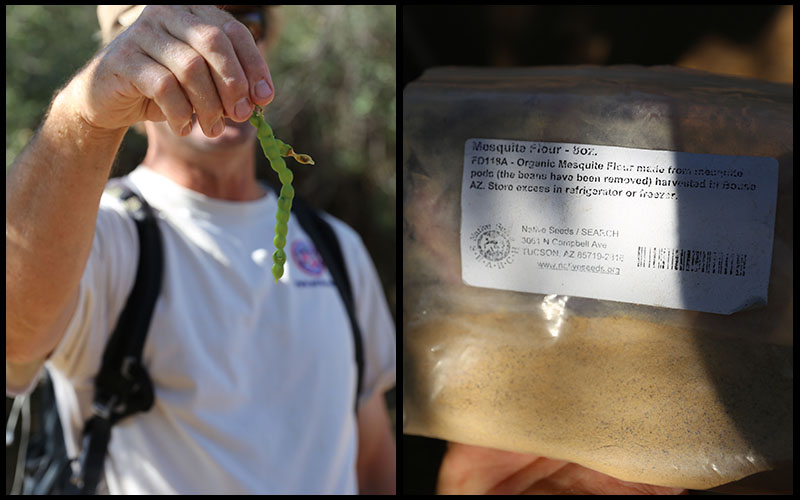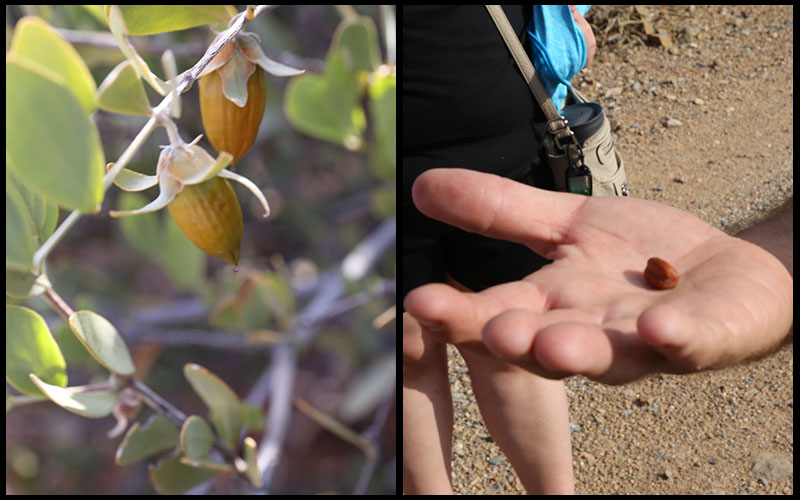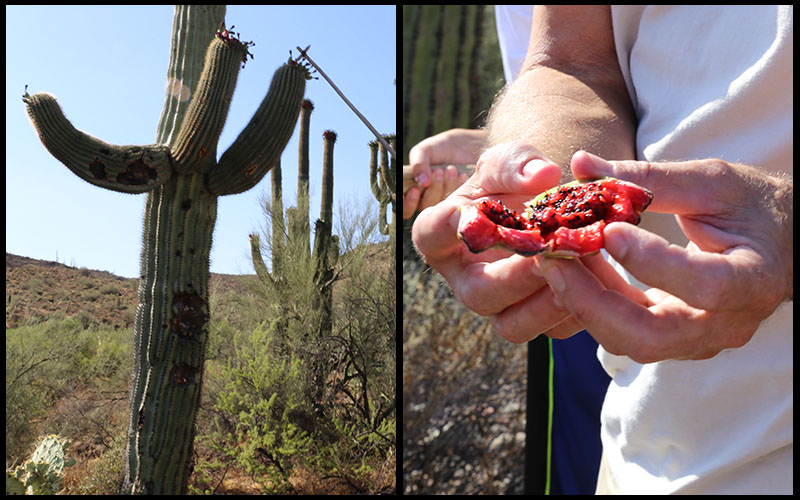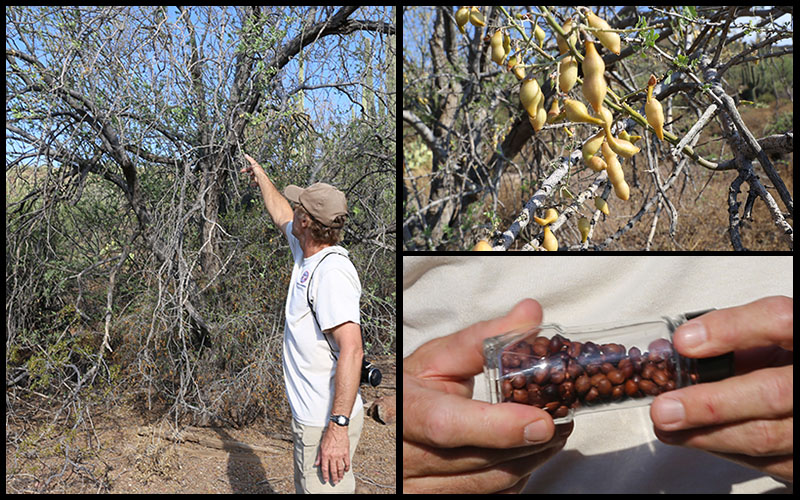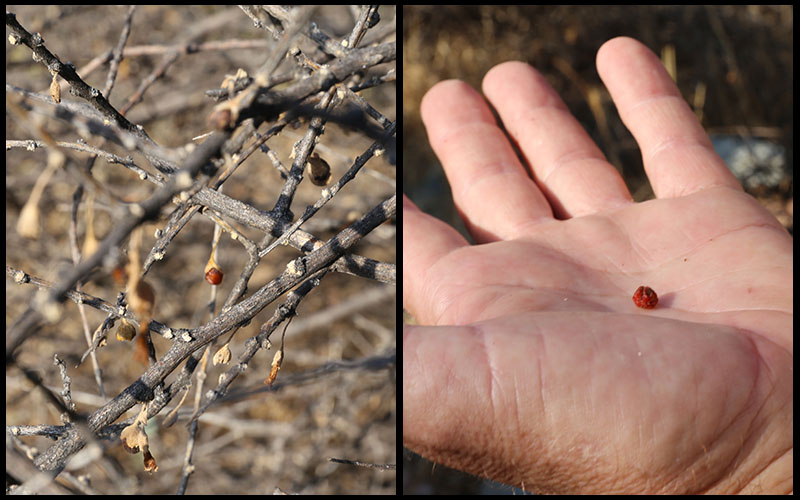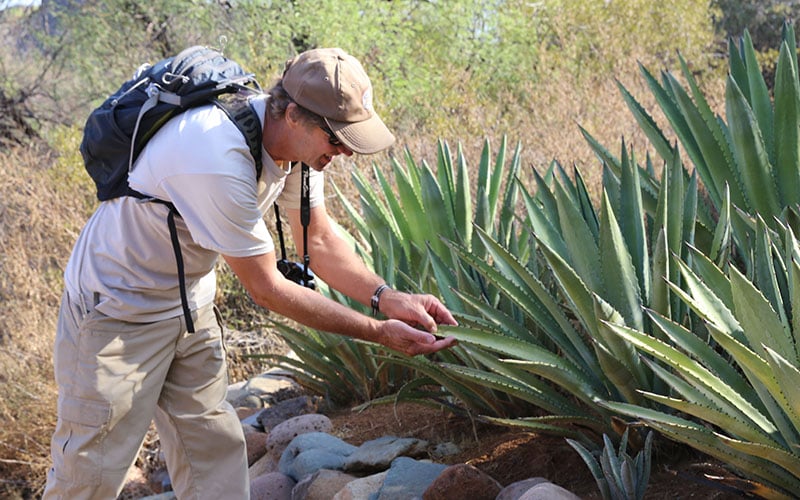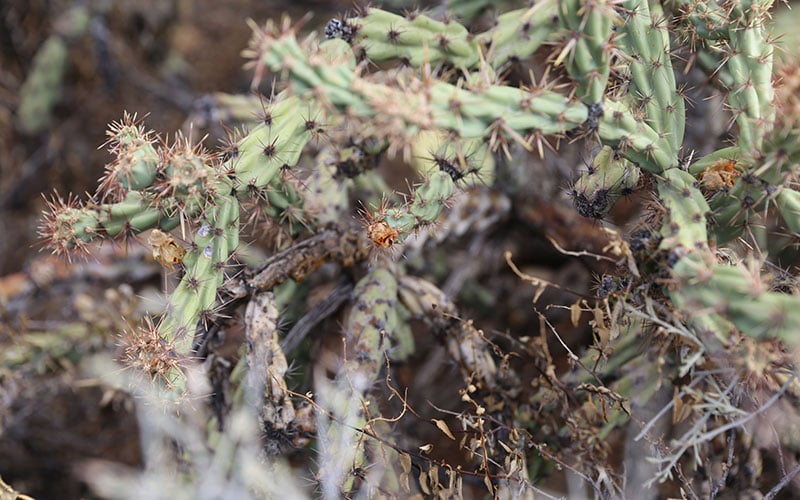Slug: Tasty desert plants. 702 words.
Photos: Photo-driven story (Photos left in story for correct placement)
Video available
By SOCORRO CARRILLO and ELIZABETH S. HANSEN
Cronkite News
CAVE CREEK, ARIZ. — Sweet red fruit rests on the arm of a prickly Saguaro. Yellowing pods are ground into meal. Spiked bright-green pads are roasted over a crackling fire pit.
You can replicate meals made more than a thousand years ago from plants growing in Arizona’s Sonoran Desert. To learn more, take an early morning nature walk in the Spur Cross Ranch Conservation Area in Cave Creek. (Maricopa County park ranger Kevin Smith reminds visitors not to pick desert plants on government property unless you’re on a guided tour.)
Here are nine desert fruits and legumes that you can turn into a snack or meal.
Prickly pear
From ice cream to candy to margaritas, prickly pear makes the rounds in many Southwest kitchens. This bright, magenta fruit with a texture similar to watermelon is known for its delicate flavor and versatility. Carefully pull out the spines first. And yes, you have to spit out the seeds.
Prickly pears are a sweet treat but you must take extra precaution when picking it. (Photos by Elizabeth S. Hansen/Cronkite News)
Mesquite
Eating mesquite pods allow you to enjoy Christmas in July. The greenish-yellow pods can be ground into a coarse meal that can be incorporated into staples such as tortillas, tamale masa, and cookies. Mesquite tastes spicy, similar to gingerbread. Check out a recipe for making your own mesquite flour and cookies from the Arizona Historical Society.
The bright green pods that hang from the Mesquite tree contain a nutritious and versatile snack. The pods are most useful when dried and ground into meal or flour. (Photos by Elizabeth S. Hansen/Cronkite News)
Jojoba
Pick up a bottle of lotion and you may recognize the name of this oily plant. Known for its moisturizing properties, Jojoba (pronounced ho-ho-bah) can be found in cosmetic products. If you find this large bush in your area, you can also eat the nuts that are found on the female variety of the plant, containing seed pods. The nut has a bitter flavor similar to an almond.
Jojoba seed oil is found many cosmetic products but you can also eat the accompanying seed. Maricopa County park ranger Kevin Smith allows hikers to sample the almond like flavor of the Jojoba seed. (Photos by Elizabeth S. Hansen/Cronkite News)
Saguaro
Saguaro are an Arizona native and a protected species, so don’t pick them from a park or other government-protected area. If you find one of these desert rarities on your property pick the fruit once the rind has turned from a pale color to a deep green. Then comes the hard work. The fruit has a built-in “pick ax” at the top; twist it off and then hack at the fruit to create a small opening. Then scoop out the pulp, to taste sweet fruit similar to a strawberry. Saguaro fruit can also be fermented and preserved.
It takes a lot of work to harvest the Saguaro fruit. The fruit usually rests high up on the arms of the cactus and a long, custom-made tool is needed to reach it. (Photos by Elizabeth S. Hansen/Cronkite News)
Ironwood
Though ironwood looks similar to the Mesquite tree, ironwood’s brown, shiny seeds taste similar to piñon nuts. Conservationists are trying to revive the slow growing ironwood, which is rich in protein but can only be harvested two weeks out of the year.
Clockwise starting at left: Maricopa County park ranger Kevin Smith shows hikers pods of an ironwood tree; ironwood pods are a pale yellow color when they’re ready to eat. Smith shows the group his ironwood seed bounty. (Photos by Elizabeth S. Hansen/Cronkite News)
Wolfberry
Blink, and you might miss this bright red berry. The wolfberry doesn’t last very long on the stem but if you grab one before its time has passed, your taste buds will dance from the distinct tart taste. The wolfberry is from the same family as the trendy Goji berry, both known for being rich in antioxidants.
The wolfberry is high in antioxidants and can be picked even in the full heat of summer. (Photos by Elizabeth S. Hansen/Cronkite News)
Agave
Murphy’s Agave wound its way from its native northern Mexico to Arizona through trading between ancient Sonorans like the Hohokam. Agave leaves can be harvested and then roasted. The leaves taste sweet, like pineapple. Agave syrup has been touted as a healthful alternative to processed sugar.
Maricopa County park ranger Kevin Smith, of the Spur Cross Ranch Conservation Area, shows hikers the spikes of the Agave plant. (Photo by Elizabeth S. Hansen/Cronkite News)
Buckhorn cholla
One look at the spiked tendrils of the cholla cactus, and your first instinct may not be to eat it. But if you’re a fan of okra, you may want to look for the buds of the buckhorn cholla. Used in ancient times as a snack, buckhorn cholla buds can be roasted and boiled. The buds also have a long shelf life, so you can dehydrate the buds and save them for years. To reawaken the soft, gummy texture all you have to do is boil the buds for twenty minutes.
Watch out! The cholla cactus’s spikes protect an okra-like inside that’s easy to cook–once you reach it. (Photo by Elizabeth S. Hansen/Cronkite News)
Palo Verde seeds
Although the scattered yellow buds of the Palo Verde tree are a nuisance to many Arizonans with allergies, the pods that dangle from the tree can also make a delicious snack. They taste best right after a monsoon storm, as rain softens a pod. Certain varieties have pods that taste like sugar snap peas.
Palo Verde pods may litter the ground but these hard seeds a great snack after they’ve been roasted. (Photos by Elizabeth S. Hansen/Cronkite News)
^__=

